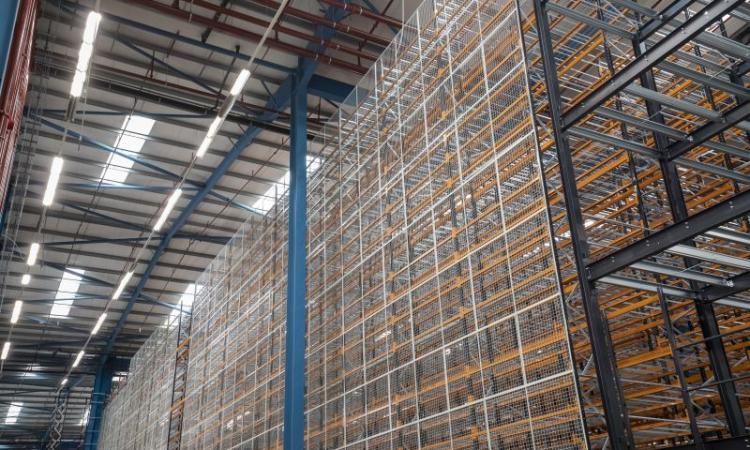Logistics real estate investors are willing to pay nearly a fifth more (19%) for European warehouses with high sustainability credentials (BREEAM Very Good or above) over assets rated below that benchmark, according to Cushman & Wakefield.
The global real estate services firm analysed a sample of over 1,500 transactions* relating to more than 1,800 buildings of 10,000 sq metres or more over the five years since 2019, the period over which a difference in pricing has emerged. The price differential was even more evident for assets outside ‘super prime’ locations where the premium rises to 24%. This implies investors place even greater value on green credentials in locations where the quality of the asset has a stronger influence on its ability to attract and retain tenants, income and value.
In its Sustainable Logistics – Navigating Change in European Logistics Real Estate report, Cushman & Wakefield explores the push and pull factors behind the investment value premium, and how sustainability is impacting every aspect of the sector from the design of buildings and supply chains to financing. The firm’s analysis also reveals that current rental levels for well-rated logistics buildings across Europe are 10-30% higher than lower-quality assets.
James Chapman, Head of EMEA Capital Markets, Cushman & Wakefield, said: “For many investors the sustainability credentials of an asset under consideration top the list of pre-acquisition assessment criteria. Highly-certified assets are considered more likely to secure tenants now and in the future, provide higher rental income, minimise the risk of void periods, and retain value as a result. By revealing how this emphasis on credentials is playing out in pricing and rental terms, the ‘flight to quality’ in logistics is clear. We believe this marker of quality will persist and mature as pressure mounts to ensure assets remain tradable from both a letting and investment perspective.”
While the increasing importance of environmental credentials is positive for owners of highly-rated assets, owners of legacy or unrated buildings will be wary of falling behind market expectations and at risk of their assets becoming ‘stranded’ and exposed to write downs.
Tim Crighton, Head of EMEA Logistics & Industrial, Cushman & Wakefield, said: “The challenge for investors and asset managers is how to improve existing buildings’ sustainability credentials in an increasingly complex landscape. It is crucial to understand the return that components can deliver not just in terms of reduced carbon emissions and energy use, but also in terms of asset value and income and critically understanding how these assets support the decarbonisation of the businesses that occupy them.”
By modelling a hypothetical portfolio of over 90 similar 10,000 sq m logistics buildings across Europe in need of upgrading**, and applying likely improvements to improve their environmental performance, Cushman & Wakefield found that:
- every €10 per sq m invested in sustainability improvements reduced CO2 emissions by 2.2kg per year***
- an average investment of €113 per sq m resulted in energy savings of €15 per sq m per year, delivering an average payback period of 7.5 years***
- PV installations were the most effective investment for CO2 reduction, improving the quality of the energy the building uses while reducing the cost of buying energy from national networks.***
A Growing Finance Prerequisite
Sustainability is also influencing the ability to secure financing for acquisitions and asset improvements, a key consideration for investors. For senior secured lenders, sustainability features are increasingly a prerequisite to providing finance. As a result, there is a large and active market in specific sustainable financing products for lenders at the asset levels where several have large credit lending programmes. Borrowers can access more favourable rates for acquiring or developing/modernising assets into higher-rated assets, and extensions to borrowing limits (based on loan-to-value/LTV thresholds) to fund capital expenditure to improve assets’ sustainability performance.
Evolving Regulations and Expectations Set Baseline For Investor Action
Evolving trading rules and reporting have compelled owners of non-residential buildings to improve their assets and focus on the long-term sustainability of assets they are acquiring or funding. Although many regulatory initiatives – such as the EU’s Energy Performance of Buildings Directive and the UK’s Minimum Energy Efficiency Standards, as well as the EU Taxonomy and Sustainable Finance Disclosure Regulation – have yet to be fully imposed, investors are already acting to ensure compliance on the understanding that failure to act will negatively impact on their assets’ values and funds’ performance.
Sally Bruer, Head of EMEA Logistics & Industrial and Retail Research, Cushman & Wakefield, said: “A future view on sustainability is catalysing investor intention and activity now. Investment standards have already evolved beyond the trading rules that were introduced to stimulate sustainable action. Investors are recognising that acting early is often the best strategy to ensure they are meeting, and exceeding, the expectations of the market and any impending regulatory changes.”

